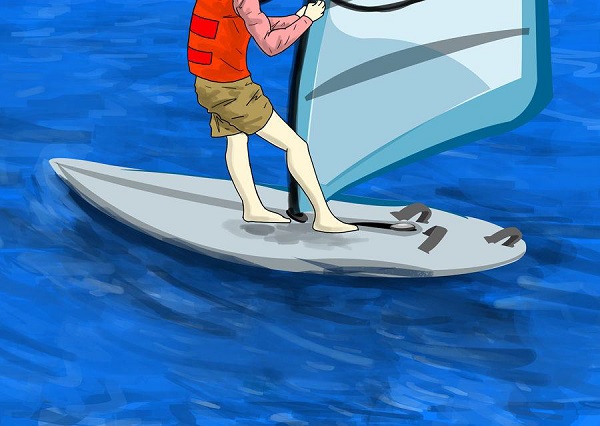How to Windsurf?
Windsurfing is a game of balance, so understanding the ways to keep oneself upright on the surfing board and knowing the skills needed to stay afloat once in the water, is very important to be a surfer. Let us discuss some of the basic steps that are supposed to be practiced before getting into serious surfing.
Preparing for Windsurfing
-
Wear a wetsuit, shoes, rescue coat, and helmet.
-
Place a whistle in the pocket of the rescue coat.
-
Keep personal flotation device with you.
-
Check the status of the boat, board, rig, and allied equipment for good condition.
How to Windsurf
-
Push the board out into deep water, until the fin is clear of the bottom.
-
Get a sense of the wind direction.
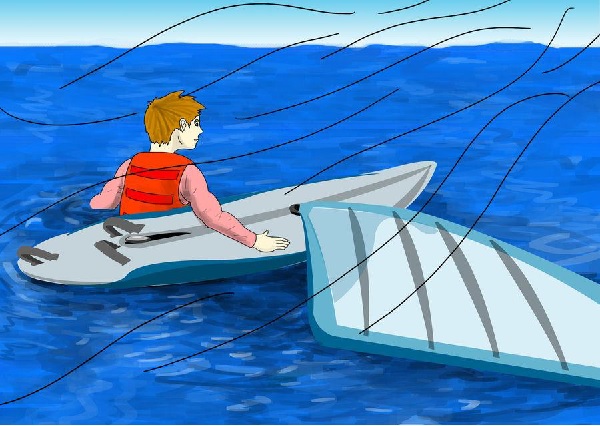
-
According to the wind direction, decide how you need to move, as it is completely a play of sailing with the help of the wind.
-
Maneuver the board so that the sail is downwind of the board.
-
Swim or walk to the upwind side and clamber onto the board – elegance is not required.
-
Stay on your knees and grab hold of the up haul, without pulling up the sail yet.
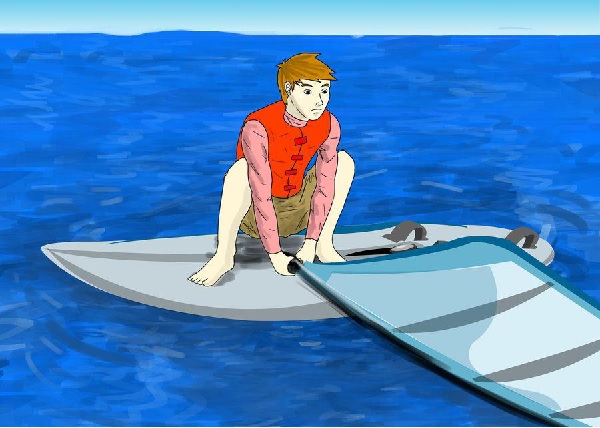
-
Stand on your feet at a slow pace.
-
Using a beginner’s board should mean you are pretty stable – rock back and forth on your feet to get a feel for it.
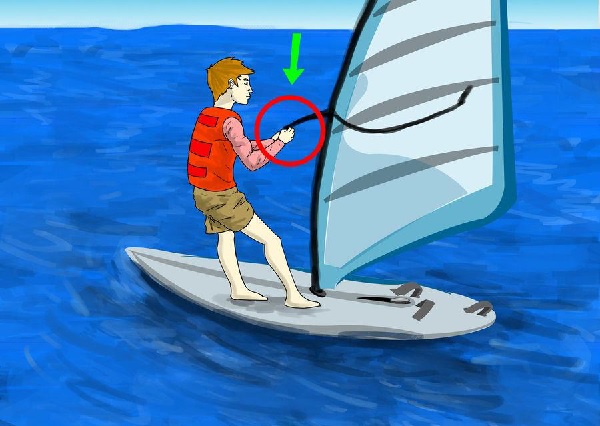
-
Bend your knees slightly and pull the sail up from the water with the uphaul, hand over hand like hauling in a rope.
-
Try to keep your back and body somewhat upright. If you feel your lower back is starting to ache, you are bending over too much.
-
Take hold of the mast with both hands and let it swing. This is called the safety or the control position: total control with next to no power. After which the wind power will take care of everything.
-
Practice steering (called Centre of Effort Steering) in the “safety” position.
-
With the mast straight up tilt the mast to your left. Your body should transfer this imbalance (the center of effort of the sail is not balanced with the center of lateral resistance of the board) to the board and make the board turn (or spin) clockwise.
-
Tilt the mast to the right and the board will turn (or spin) counter clockwise (anticlockwise). The stronger the wind and the further you tilt, the faster the board will turn (or spin). In a stiff breeze, you may be sailing very slowly at this point. Another steering description is as you tilt the mast to the stern, the board will head up in to the wind.
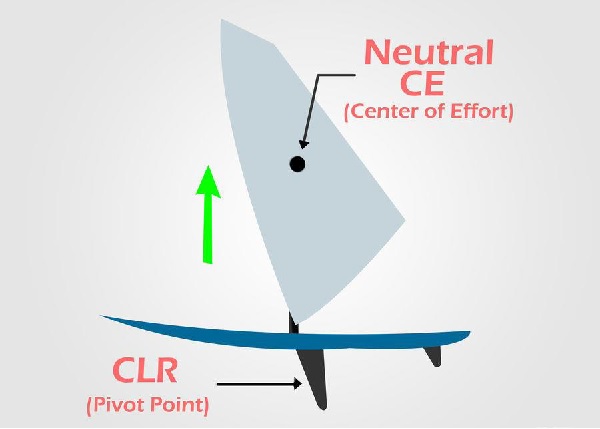
-
Start moving.
-
Notice which side the bow of the board is in relation to you, and place your lower hand on the boom so the mast is leading the sail towards the bow (front).
-
When you feel ready, transfer the other hand to the boom.
-
Don’t let the sail pull you down – the mast should be perpendicular to the board, so lean back and keep the arms straight. This is called the Number 7, and that should indicate the posture to you.
-
Pull with the stern wards hand (the back hand) to accelerate – let it out to slow down.
-
Keep your feet behind the mast foot and the toes of the front foot facing forward.
-
Relax. If you need to stop, return to the safety position, or drop the boom if it is safe to do so.
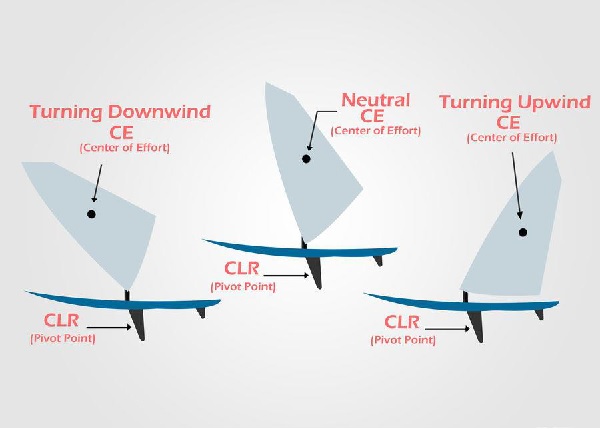
-
Make sure it goes in front of you, and bear in mind you will get very tired if you have to keep on picking it up
-
Tilt the mast from the safety position towards the stern to turn the nose of the board upwind (behind you) or towards the bow to turn downwind (in front of you).
-
Step around the mast, as the nose comes around, to get to the other side. Now you can sail away!
-
This principle works whilst sailing too – tilt the mast forward and backward using the boom to adjust your course.
